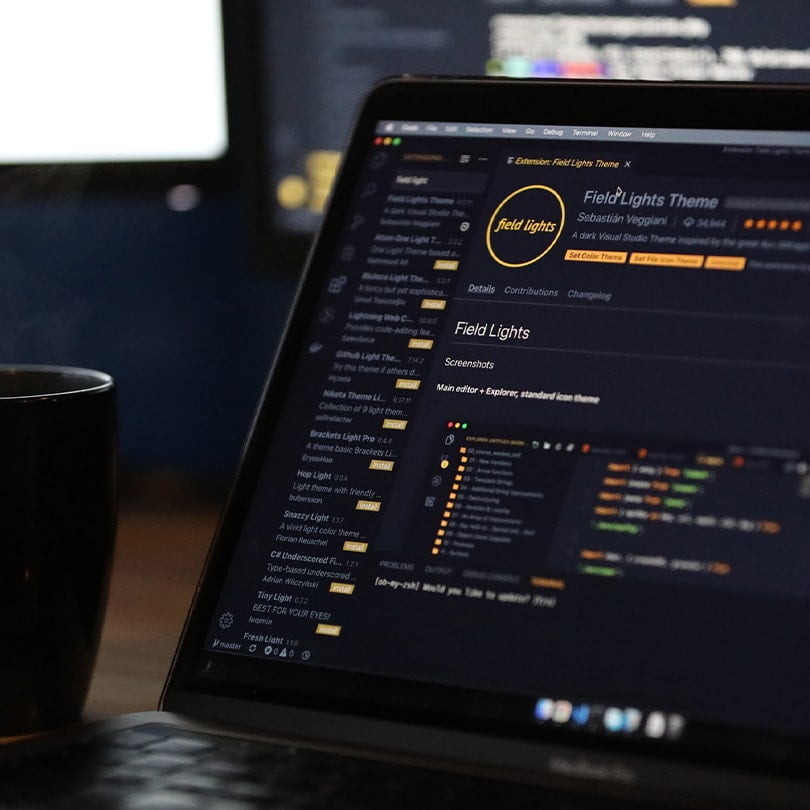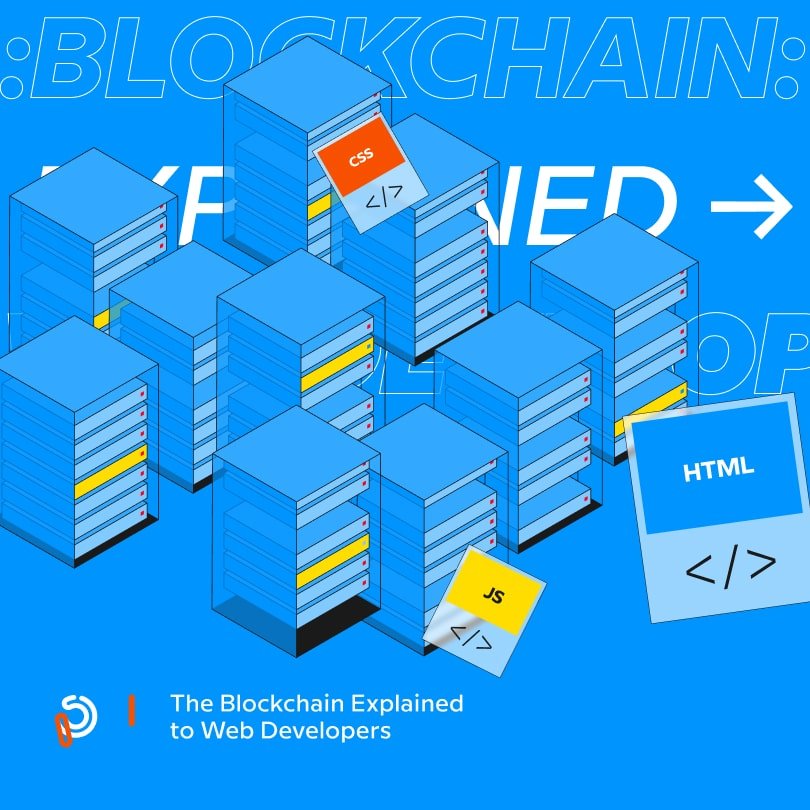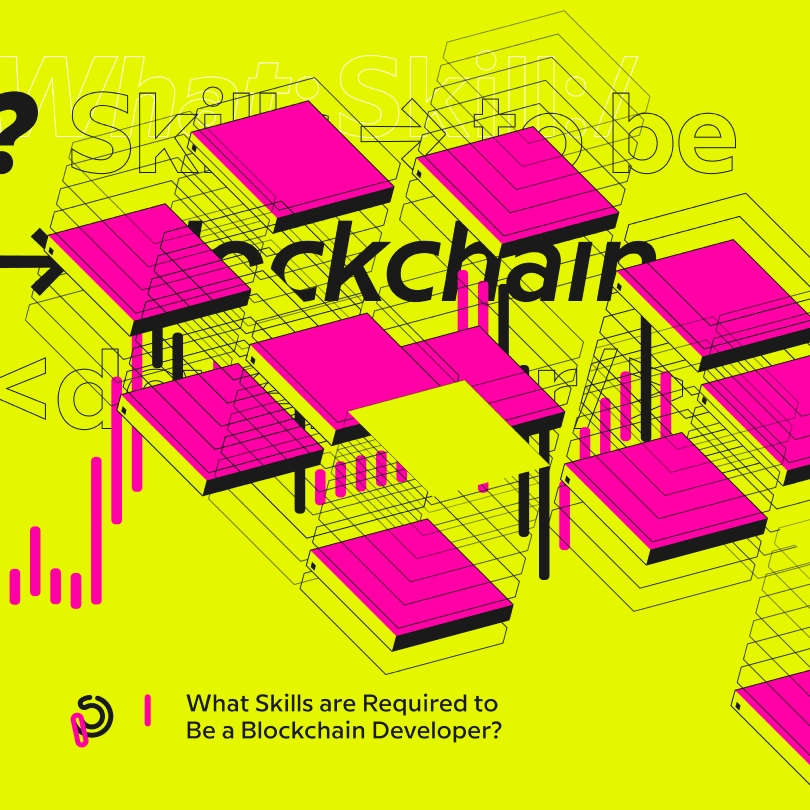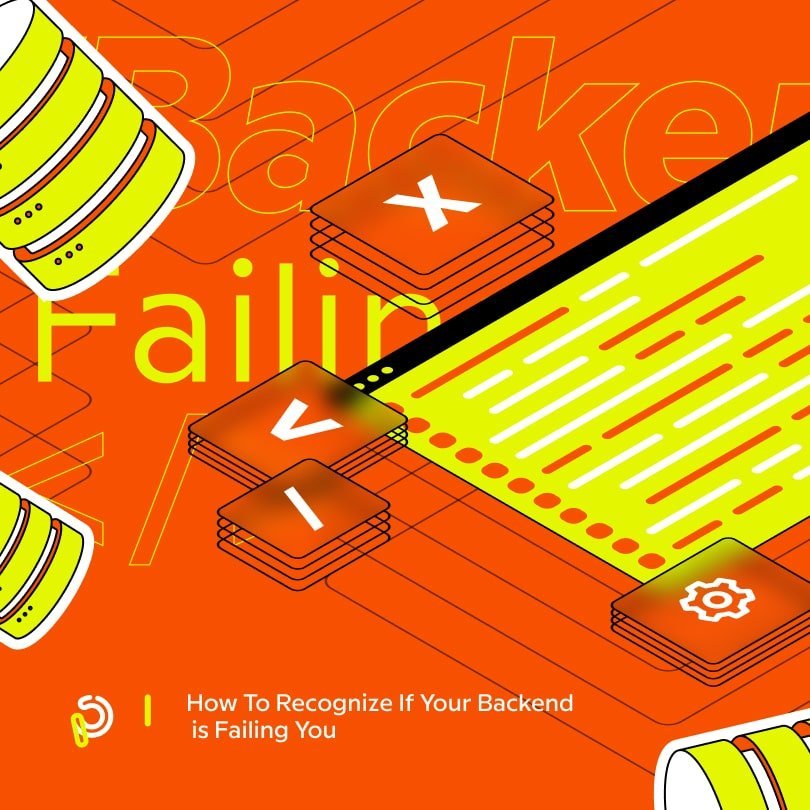Blockchain isn't necessarily a new technology; still, there are many people in the tech industry that aren't entirely familiar with the way it works. Sure enough, every developer has heard about Bitcoin and other cryptocurrencies, but not all know that blockchain is the technology that serves as the basis for them.
For a while now, tech experts have argued that by acquiring blockchain skills developers will be able to create a revolution similar to the introduction of the internet. However, for some, the actual workings behind this technology remain somewhat foggy.
In this article, we’ll aim to discuss everything web developers ought to know about blockchains.
Defining A Blockchain
The technology was first introduced as a support for bitcoin, but it can also be pretty easily defined without references to cryptocurrency.
Most experts will describe the technology as a ledger of facts that get replicated through several devices (computers) that are assembled in an extensive peer-to-peer network. These facts can be content signatures, monetary transactions, and more. The people within the networks are referred to as nodes, and they communicate with each other by taking advantage of cryptography. Cryptography enables the secure identification of both the sender and the receiver.
And when a node wishes to add a new fact to the ledger, the network will determine whether the fact will appear in the ledger or not. The consensus is what experts call a block.
Getting the Facts Right
The definition you’ve read above may seem a bit confusing; however, when deciphering every part of it, you’ll soon realize that it’s not that difficult to understand fully.
For starters, peer-to-peer networks aren’t necessarily new intentions. BitTorrent and Napster are great examples of such a network. However, in the blockchain system, peers don’t exchange songs or movies but facts.
The only problem with P2P networks is reconciliation or conflict resolution when two incompatible facts manage to get into the system simultaneously. In these cases, the network must determine which one’s valid and which one’s not.
In a P2P network, a consensus system is used to resolve the problem coming from reconciliation. What makes a blockchain system different from this aspect is the fact that it uses a proof-of-work consensus algorithm system, which uses blocks.
Blockchain Explained to Web Developers – Step by Step
Some experts argue that the best way to understand the delicate technology and processes within the blockchain is more straightforward if developers look at it from different angles.
What Does Blockchain Tech Do?
Simply put, this technology allows the secure sharing or processing of data between several parties within a network of non-trusted peers. In the case of blockchain, the data can literally be anything, but in most cases, it’s mostly information that, at the moment, require third-party assistance to exchange. The most obvious example would be money (which would require a bank), proof of property (which would require a lawyer), loan certificates, and such.
Simply put, using the blockchain would eliminate the need to use third parties.
How Does Blockchain Tech Work?
In essence, this technology relies on three different concepts:
- Peer-to-peer networks
- Public-key cryptography
- Distributed consensus
All of these concepts have been around for a while now. As a developer, don’t feel put off if you don’t know everything about these concepts.
What Does the Tech Compare to?
You can look at the blockchain as a database that’s replicated as many times as there are users. Or, you can look at it as a supercomputer that consists of all the computing power of every node within the network. You can use this supercomputer for data processing purposes, just like in the case of a remote AP, without the need for a backend.
The Power of Blocks
These blocks help to establish the order of facts within the network in the case of non-trusted peers. Every fact is grouped in blocks. There’s only one giant chain of these blocks in the entire network, with each block referencing the previous. This means that if fact C is in block 14 and fact E is in the 15th block, then the latter is posterior to fact C and the entire network sees it that way.
Lastly, all facts are pending before receiving confirmation and getting added to the block.

Mining
In some cases, nodes (peers) may create new local blocks with sets of pending facts in them. When this happens, nodes compete in having their block become the new additional part of the chain in the network. Nodes achieve this by rolling dice – if the node gets a double six, then the block can be published with all the facts confirmed. After this, the new block will be sent to every other node in the network. They will also check whether the new block is correct and will add it to their own chain copy.
However, in order for that to happen, nodes need to roll a large number of dice. Validating blocks randomly is rather unlikely. This approach helps prevent fraud and aids in network security. Because of this, new blocks will only get published in predetermined intervals.
This is the mining process, which is pretty much like gold mining. In the blockchain, the economic reward for mining is usually some form of money, i.e., currency.
Cryptocurrency and Money
Each moment, minder nodes in the chain test several thousand random strings with the aim of forming a new block. Because of this, mining in the chain requires a large amount of storage and CPU, meaning that miners must pay for storing their facts in the chain.
On the other hand, simply reading facts costs no money. In this case, you just need to run your node to recuperate the facts used by every other node in the system.
So, to sum it up:
- You can read the data for free
- If you want to add facts, that will cost you only a small fee
- Mining will be the most expensive process as you will have to pay all the fess of the facts in the block
Still, we’re not talking about money in the most traditional sense. Depending on the network, you will pay with the pertaining cryptocurrency (An Ethereum network uses Ethereum, while a Bitcoin network uses Bitcoin, etc.).
This begs the question: where do the first coins come from?
Miners will receive small gratification for their efforts to keep the network safe and working. Whenever a miner manages to mine a block, they will receive a set amount of crypto. This way, the network generates its own monetary ecosystem.
As you may know, cryptocurrencies can be converted into real money. However, their value is mostly driven by demand.
Even today, cryptocurrency is still a volatile investment with dazzling highs and depressive lows. There have been many attempts to popularize crypto-based investments. Still, even seasoned crypto-aces urge the general public to stay away from these investments until they fully understand how blockchain works and the nature of cryptocurrencies.
On the other hand, those who understand both the concept of crypto and the blockchain system advocate that a digitized monetary system such as this can create much safer and more transparent financial processes, which is simply unmatchable by traditional banking methods.
Program Execution (Contracts)
Thus far, we’ve almost exclusively talked about the chain’s storage capabilities, but the blockchain can also execute programs.
Some chains let facts within blocks contain mini-programs. In the case of bitcoin, you can set up mini-programs that will make BTC transactions conditional.
Other blockchains allow for the usage of more sophisticated programs. There are networks where the contract also carries a mini-database which gives methods for modifying the data. In these instances, the contracts are replicated along with their database. And every time a user calls a method on that contract, they also update the underlying data, replicating the command, which is then replayed by the whole network.
Practical Use – The Importance of the Blockchain Tech
A considerable advantage of the technology is the fact that the facts stored in the network won’t be lost: they are there forever, replicated as many times as the number of nodes in the system. Apart from that, the blockchain won’t only store the data’s final state but also store the history of the data’s every form, enabling the nodes to check for correctness with ease.
The fact from the blocks can be trusted as they are verified. Because it requires distributed consensus, data storage isn’t fast in the system.
For the most part, the greatest revolutionizing aspect of the technology lies within the fact that it can potentially take out intermediaries from any process. With blockchain, there’s no need for verified third parties to build trust anymore.
And while removing intermediaries is a revolutionary step, it may also disrupt the digital ecosystem as a whole. Today, most successful online businesses are intermediaries. Take Amazon or Google as examples. The first has become the third party between buyers and sellers. In the case of Google, the search engine has become the mediator between websites and site users.
And even though technology has the power of disrupting the way the internet currently works, some experts argue that it won’t create such a huge bang.
Why? For starters, they state that removing third parties to exchange services and goods might not be so certain. Back when the internet launched, it also carried the promise of disintermediation, but still, Google was the first company to capitalize on the market around the globe – Google, an intermediary.
Can You Build Your Own Blockchain?
In essence, yes. However, the technology behind it is intricate, using several performance optimizations, custom network protocols, and advanced cryptography. All this is pretty tiresome and complicated to develop from scratch every time a project requires you to use the technology. Luckily, there multiple open-source implementations you can use, and experts often advise using the Bitcoin implementation for application building. Even though it was designed for financial transactions, you can create other pseudo-smart contracts with it.
Blockchain Development
The technology has been used widely in different industries because it can add massive value by offering:
- Better traceability – when you record the supply of your goods on the blockchain, you can get a complete trace that represents where every asset came from and every step of its “journey.”
- Improved transparency – Every update in the records will show, making it easy to reveal who made the alterations and when.
- Better speed – with blockchain technology, you can simplify and automate several business processes and carry them out more securely. There’s no need for several ledgers, and everyone in the system can easily access the same info.
- Reduced costs – Without intermediaries, businesses can build trust faster, enabling them to reduce certain operational costs.
However, blockchain development can be costly and complex. As such, there are a couple of questions you should ask yourself before you consider developing in blockchain or integrating your existing platform with the technology.
Will you be storing data? If your business isn’t required to handle a lot of data, blockchain might not be the best option. Blockchain has a huge advantage for those platforms that use massive amounts of data stored in different databases since the technology will allow you to have a single transparent view of an updated ledger accessible to everyone in the network.
Is the data you use dynamic? If the databases need to be altered frequently, then a blockchain solution can make it easier for several parties to write multiple entries into a system that’s incorruptible.
Do you need better transparency and better control of your data? If you have privacy issues with third-party intermediaries, a blockchain solution in web development may provide read- and write-only permissions. With this, you can also avoid delays and potentially high fees.
Generally speaking, blockchain development can also be a sensible move if you want to work with your clients in a trustless environment. In such a setting, the ledger is updated all the time, and consensus algorithms validate the transactions.
The Takeaway
Even in the earliest days of the technology, blockchain managed to divide experts. Some thought that it would push the digital revolution even forward, while others referred to it as a passing fancy that’s based on an idea that’s just impractical. The technology was introduced in 2008, and even today, 14 years later, people are still trying to give a definitive answer to this question.
Still, blockchain technology services is here to stay, and it will most definitely help form our future and the digital realm as a whole.





